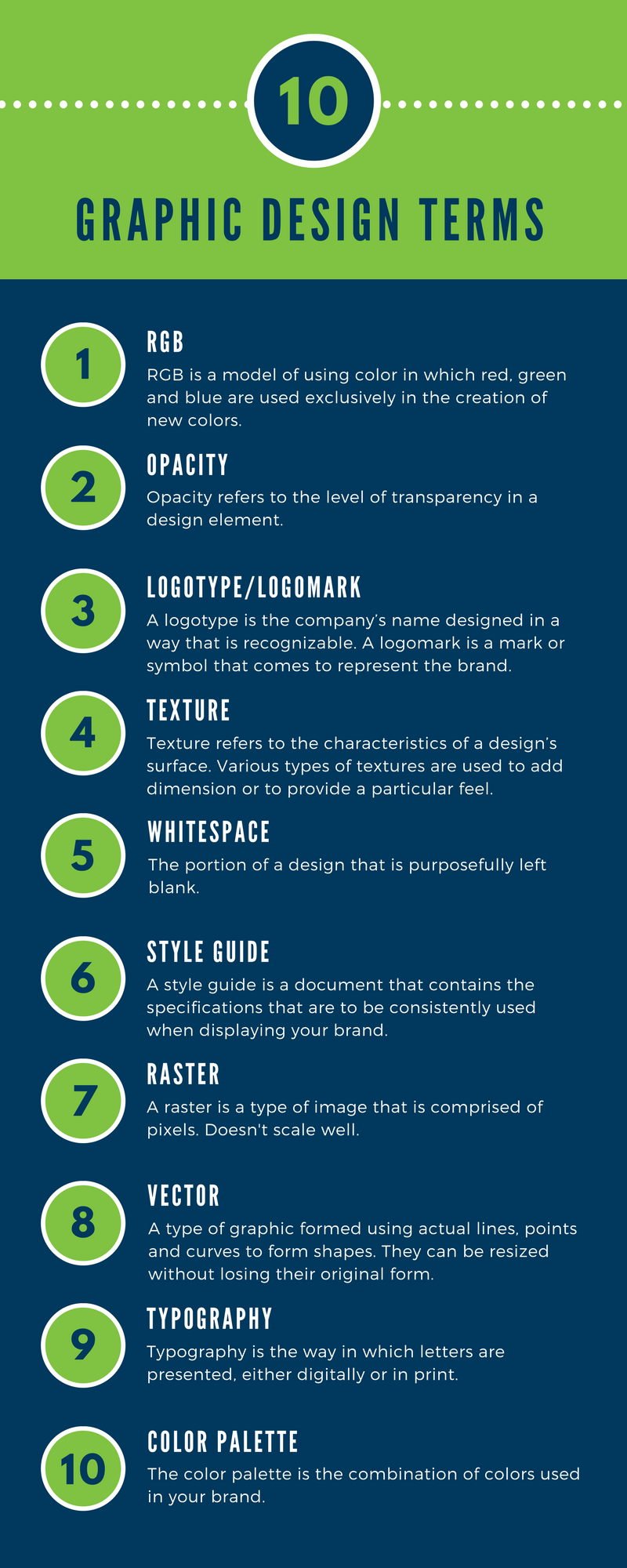Whether you plan to hire a graphic designer or a virtual assistant to create visuals for your blog or you want to learn some basic design skills on your own, it will benefit you to gain an understanding of the terminology used by professional graphic designers. Even if you only outsource your graphic design, a basic knowledge of graphic design terms will make it easier to get what you want. Learning the lingo will help you to communicate clearly with your designer or to grasp the fundamentals of good design before attempting to give it a go.
Take time to familiarize yourself with these graphic design terms to lessen the overwhelm and give you more confidence to bring your ideas to life.
10 Graphic Design Terms Defined
RGB
RGB is a model of using color in which red, green and blue are used exclusively in the creation of new colors. RGB is a system that is used in digital design, rather than in print.
Opacity
Opacity refers to the level of transparency in a design element. At 100% opacity, an object is solid. As the percentage gradually decreases it becomes more transparent.
Logotype / Logomark
A logo is an important design element that is a visual representation of a company or, in this case, a blog. There are two main types of logos. A logotype is the company’s name designed in a way that is recognizable. A logomark is a mark or symbol that comes to represent the brand.
Texture
Texture refers to the characteristics of a design’s surface. Various types of textures are used to add dimension or to provide a particular feel to a design. An example may be retro textures that are incorporated into a project to give it the appearance of a vintage poster or a document produced by ink press.
Whitespace
This is also commonly referred to as negative space. This is the portion of a design that is purposefully left blank. Despite the name, this empty space can be any color. Ample whitespace is encouraged in good design.

Style Guide
A style guide is a document that contains the specifications that are to be consistently used when displaying your brand. It specifies the exact colors, typography, sizes and other such criteria so that the look of your brand is the same across various platforms.
Raster
A raster is a type of image that is comprised of pixels. Such graphics do not conform well to changes in size, as they will usually become distorted and lose their original integrity. The popular graphic design software Photoshop uses raster images.
Vector
The opposite of a raster image is a vector. Rather than being made of pixels, this type of graphic is formed with actual lines, points and curves to form shapes. They can be resized without losing their original form.
Typography
Typography is the way in which letters are presented, either digitally or in print. Commonly referred to as font, it provides a particular look to your text. Types of typography include serif, sans-serif and script.
Color Palette
The color palette is the combination of colors used in your brand. The colors should work well together and provide a feeling that is reflective of what your offer. Color psychology is important to reaching an audience.
The terminology offered here only scratches the surface of those you’ll find as you pursue the art of design. Hopefully, they will allow you to communicate effectively with your designer or to begin to understand the very basics of graphic design for your own purposes.







Leave A Comment